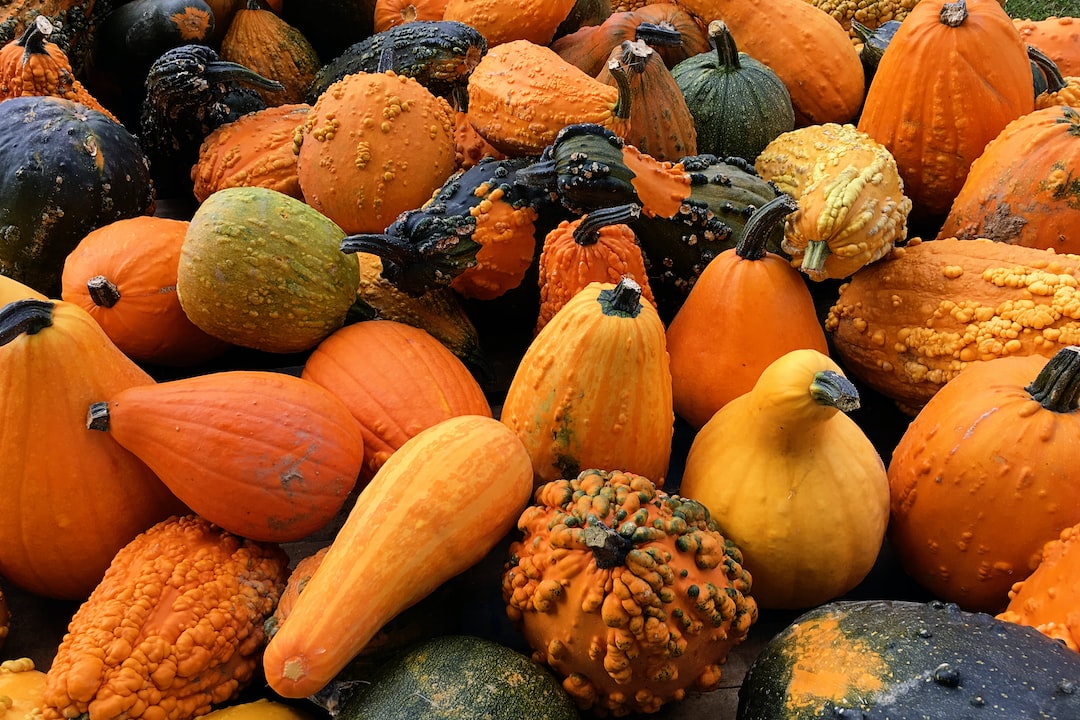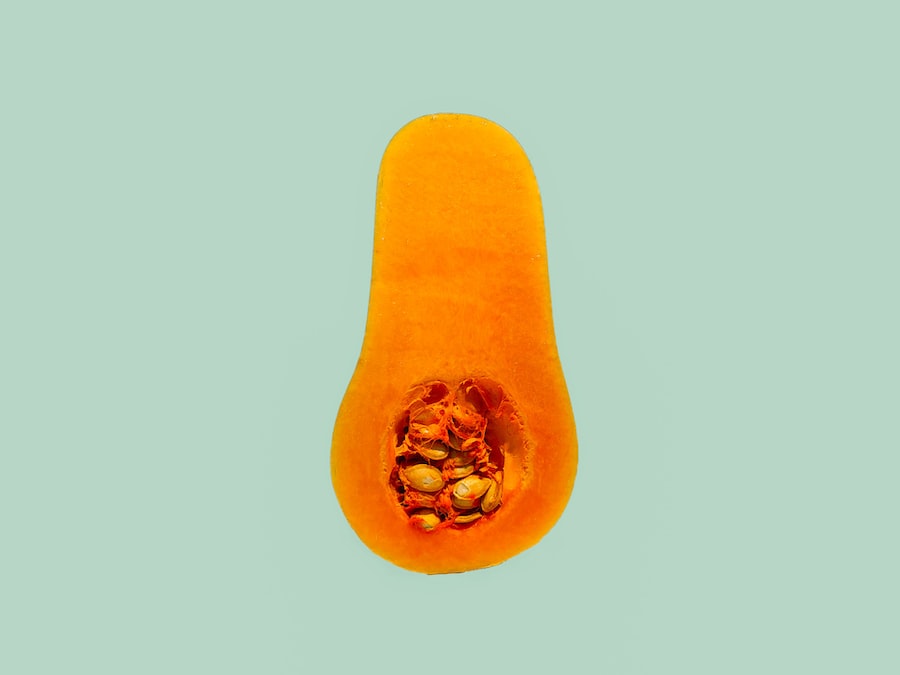Ready to Harvest: A Guide on How to Tell When Your Acorn Squash is Ripe

Acorn squash, also known as winter squash, is a popular vegetable that belongs to the Cucurbitaceae family. It is believed to have originated in North and Central America, where it has been cultivated for thousands of years. The name “acorn squash” comes from its shape, which resembles that of an acorn. This vegetable is known for its sweet and nutty flavor, making it a favorite ingredient in many dishes.
In addition to its delicious taste, acorn squash is also highly nutritious. It is low in calories and fat, making it a healthy choice for those looking to maintain or lose weight. Acorn squash is also a good source of vitamins A and C, as well as potassium and fiber. These nutrients are essential for maintaining a healthy immune system, promoting good vision, and supporting digestive health.
Key Takeaways
- Harvesting acorn squash at the right time is crucial for optimal flavor and texture
- Factors affecting ripeness include temperature, sunlight, and moisture levels
- Visual cues such as color and texture can indicate when acorn squash is ripe
- Tapping and thumping techniques can also be used to check for ripeness
- Checking the stem and skin color, as well as firmness and weight, can help determine if acorn squash is ready to harvest
Importance of Harvesting at the Right Time
Harvesting acorn squash at the right time is crucial for ensuring optimal flavor and texture. If the squash is harvested too early, it may not have fully developed its sugars, resulting in a bland taste. On the other hand, if the squash is left on the vine for too long, it may become overripe and lose its firmness and texture.
When acorn squash is harvested at the right time, it will have a sweet and nutty flavor with a creamy texture. The flesh should be tender but still firm, allowing it to hold its shape when cooked. Harvesting at the right time also ensures that the squash will have a longer shelf life, allowing you to enjoy it for weeks or even months after harvest.
Factors Affecting Acorn Squash Ripeness
Several environmental factors can affect the ripening process of acorn squash. Temperature plays a significant role in determining how quickly the squash matures. Warmer temperatures can accelerate ripening, while cooler temperatures can slow it down. Additionally, the amount of sunlight the squash receives can also impact its ripening process.
Other factors that can affect acorn squash ripeness include soil fertility and moisture levels. Squash plants require well-drained soil that is rich in organic matter. Adequate moisture is also essential for proper growth and development. If the soil is too dry or too wet, it can affect the ripening process and result in poor-quality squash.
Visual Cues to Look for in Ripe Acorn Squash
| Visual Cues | Ripe Acorn Squash |
|---|---|
| Color | Dark green with patches of orange or yellow |
| Texture | Firm and smooth skin without blemishes or soft spots |
| Weight | Heavy for its size |
| Stem | Dry and firmly attached |
| Sound | When tapped, it should sound hollow |
One of the easiest ways to determine if acorn squash is ripe is by examining its appearance. Ripe acorn squash will have a deep, rich color. The skin should be dark green or orange, depending on the variety. Avoid squash with pale or yellowish skin, as this may indicate that it is not fully ripe.
The texture of the skin is also important. Ripe acorn squash will have a smooth and firm skin. Avoid squash with soft spots or blemishes, as this may indicate that it is overripe or damaged.
Tapping and Thumping Techniques for Checking Ripeness
Another method for checking the ripeness of acorn squash is by using sound. When you tap or thump on a ripe squash, it should produce a hollow sound. This indicates that the flesh inside is fully developed and ready to be harvested.
To tap or thump a squash, simply use your knuckles or a small tool to gently tap on the skin. Listen for a hollow sound, which indicates ripeness. If the sound is dull or muffled, the squash may not be fully ripe yet.
Checking the Stem and Skin Color for Ripeness

The stem of an acorn squash can provide valuable information about its ripeness. When a squash is ripe, the stem will be dry and brown. If the stem is still green or moist, it may indicate that the squash is not yet fully mature.
In addition to the stem, the color of the skin can also indicate ripeness. As mentioned earlier, ripe acorn squash will have a dark green or orange skin, depending on the variety. Avoid squash with pale or yellowish skin, as this may indicate that it is not fully ripe.
Testing the Firmness and Weight of Acorn Squash
Firmness and weight are two additional factors to consider when determining if acorn squash is ripe. Ripe acorn squash should feel firm when gently pressed. If the flesh gives too much or feels mushy, it may be overripe.
Weight can also be an indicator of ripeness. Ripe acorn squash will feel heavy for its size. This is because the flesh inside is dense and full of moisture. If a squash feels light or hollow, it may not be fully mature.
Harvesting and Storing Acorn Squash
When it comes time to harvest acorn squash, it’s important to do so carefully to avoid damaging the fruit. Use a sharp knife or pruning shears to cut the squash from the vine, leaving a few inches of stem attached. Be careful not to twist or pull on the fruit, as this can cause it to break off prematurely.
After harvesting, it’s important to store acorn squash properly to extend its shelf life. Store the squash in a cool, dry place with good air circulation. Avoid storing it near fruits that produce ethylene gas, such as apples and bananas, as this can cause the squash to spoil more quickly.
Common Mistakes to Avoid When Harvesting Acorn Squash
There are several common mistakes that can affect the quality of acorn squash when harvesting. One mistake is harvesting too early or too late. As mentioned earlier, harvesting too early can result in a bland taste, while harvesting too late can cause the squash to become overripe and lose its texture.
Another mistake is not properly inspecting the squash before harvesting. It’s important to check for any signs of damage or disease, as this can affect the quality of the fruit. Additionally, not storing the squash properly after harvest can also lead to spoilage and a shorter shelf life.
Recipes and Cooking Tips for Freshly Harvested Acorn Squash
Once you have harvested your acorn squash, there are many delicious recipes you can try. One popular option is to roast the squash. Simply cut it in half, remove the seeds, and place it cut-side down on a baking sheet. Roast in the oven at 400°F (200°C) for about 45 minutes, or until the flesh is tender. You can then scoop out the flesh and enjoy it as a side dish or use it as a filling for stuffed acorn squash.
Another tasty option is to make acorn squash soup. Simply roast the squash as mentioned above, then blend the flesh with vegetable broth, onions, garlic, and your choice of spices. Heat the mixture on the stove until warmed through, then serve with a dollop of sour cream or Greek yogurt.
Conclusion:
Harvesting acorn squash at the right time is crucial for ensuring optimal flavor and texture. By paying attention to visual cues such as color and texture, using tapping and thumping techniques, checking the stem and skin color, and testing firmness and weight, you can determine if acorn squash is ripe and ready to be harvested. Proper harvesting techniques and storage methods will also help extend the shelf life of acorn squash.
By growing and harvesting your own acorn squash, you can enjoy its delicious flavor and reap its nutritional benefits. Whether roasted, stuffed, or made into soup, freshly harvested acorn squash is a versatile ingredient that can be enjoyed in a variety of dishes. So why not give it a try and experience the joy of growing and harvesting your own acorn squash?
If you’re wondering how to tell when an acorn squash is ripe, you’ll find some helpful tips in this informative article from Lawn World. They provide expert advice on identifying the signs of ripeness in acorn squash, ensuring that you can enjoy the best flavor and texture. Check out their article here for a comprehensive guide on determining the perfect time to harvest your acorn squash.



